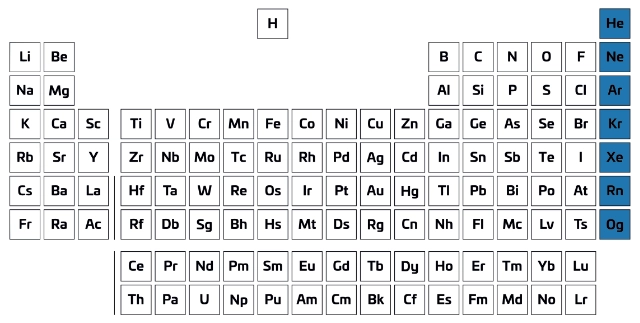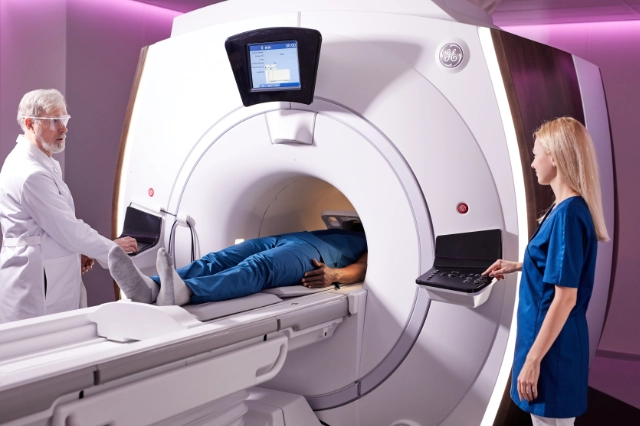Group 0 (the noble gases)

Aims of this page
After studying this page, you should be able to:
- describe trends in physical properties
- predict physical properties of noble gases based on these trends
- explain some uses of noble gases
- explain why the noble gases are chemically unreactive compared to other elements.
Overview
The group 0 elements are placed on the far right of the periodic table. They are called the noble gases because they are gases at room temperature, and they are very unreactive.
The noble gases are so unreactive, they are monatomic and exist as separate atoms.
The name ‘noble gas’ comes from the idea that the group 0 elements are unwilling to react with other elements.
Boiling points
The graph shows how the boiling points of noble gases change as you go down group 0.
When you click on the download symbol, you will be able to download the graph as an image file or pdf file, save its data, annotate it, and print it.
Remember that absolute zero is ‑273.15 °C. You cannot get any colder than this.
The melting and boiling points of helium are very close to absolute zero, but helium remains as a liquid at these very low temperatures unless put under pressure.
You should see that, for these group 0 elements:
- the boiling points have negative values, so they are gases at room temperature
- boiling point increases as you go down group 0 and the relative atomic mass increases.
Little energy is needed to overcome the attractive forces between noble gas atoms, so the boiling points are very low. The strength of these forces increases as the relative atomic mass (and so number of electrons in each atom) increases. This is why boiling points increase down the group.

Uses of noble gases
Common uses of noble gases depend on these properties:
- low density
- unreactivity.
Based on low density
The graph shows the densities of noble gases as you go down group 0. The values are calculated for room temperature and pressure, rtp (20 °C and 1 atm).
For comparison, the density of dry air at rtp is about 1.29 g dm–3.
Helium and neon are less dense than air. This means that they can be used as lifting gases, in particular helium because it has such a low density.

Worked example
Radon is placed near the bottom of group 0. The relative atomic mass of its most stable isotope is 222. Predict the density of radon at rtp using the graph to help you. Explain your answer.
About 9.3 g dm–3.
The graph shows that the density of group 0 elements is proportional to their relative atomic mass. When the line is extrapolated up and to the right, it reaches 9.3 g dm–3 at 222.
Radon is a rare radioactive element. Its most stable isotope, 222Rn, has a half-life of just 3.8 days. Radon is produced during the radioactive decay of thorium and uranium, and is a source of natural background radiation.
Based on low reactivity
The noble gases do not support oxidation or combustion. Argon is used as a shield gas in welding. It prevents the hot metal oxidising during the process, which would harm the quality of the weld. The video at the bottom of the page shows this process.
Argon is denser than air. This helps to keep it over the metal during welding.
Why are noble gases unreactive?
The atoms of each group 0 element have a full outer shell (highest occupied energy level). They have stable electronic configurations – they have no tendency to lose, gain or share electrons.
Dot and cross diagrams to show the electronic configurations of helium, neon and argon.
Take care when you discuss the electronic configurations of the noble gases:
- all group 0 elements have 8 electrons in their outer shell, except
- helium, which has 2 electrons.
The group 0 elements used to be called the inert gases. An inert substance does not react with anything at all, but the first noble gas compound, xenon tetrafluoride, was synthesised in 1962. Since then, many group 0 compounds have been made. Krypton, xenon and radon can form stable compounds, but most others break down quickly.
Video
This video shows welding using argon as a shield gas.
